Would you be able to describe the world-famous indri? It’s one of the largest living lemurs, lives only on Madagascar, it’s the only tailless lemur, and has a peculiar loud call. One place where you can find it is this national park.
Day 10 on Madagascar: Andasibe-Mantadia National Park
We drove here from Vakôna Forest Lodge (three-hour drive from Antananarivo, the capital of the island), and met our local guide, the same who guided us on our night walk at the Mitsinjo Reserve the previous day. He was well trained, very knowledgeable, capable of finding the little creatures – a tiny nose-horned chameleon at the entrance to the park – as well as the famous lemurs.
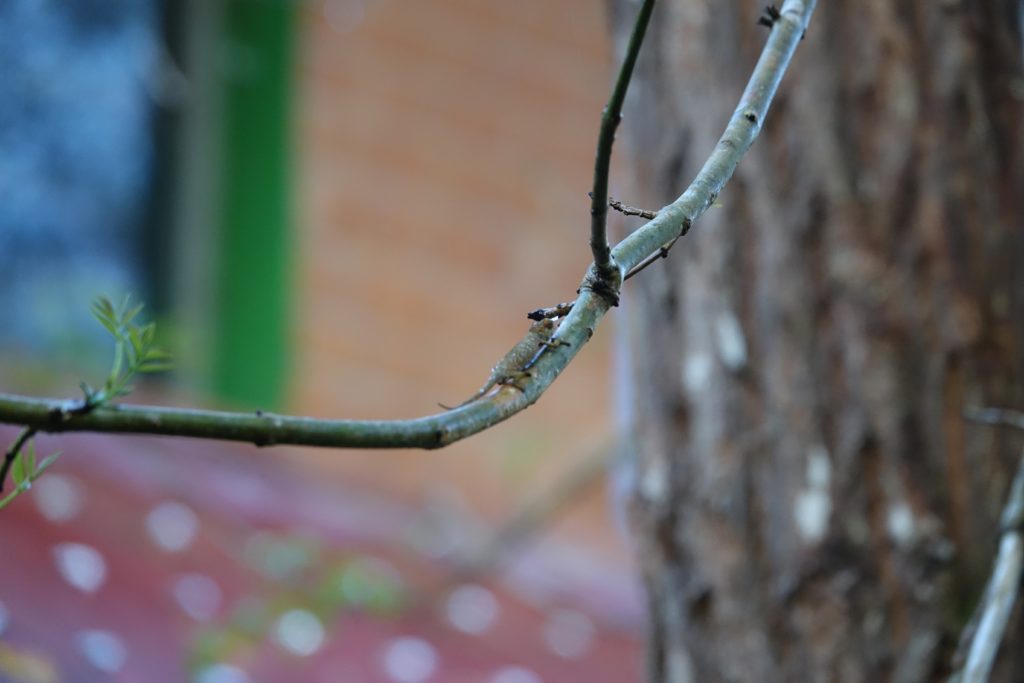 The park was previously known by its French name, Perinet Reserve, but now it proudly wears its Malagasy name. It consists of two parts: Mantadia National Park and Analamazaotra Special Reserve. Locally, it’s known as Andasibe because it’s very close to the small town by the same name.
The park was previously known by its French name, Perinet Reserve, but now it proudly wears its Malagasy name. It consists of two parts: Mantadia National Park and Analamazaotra Special Reserve. Locally, it’s known as Andasibe because it’s very close to the small town by the same name.
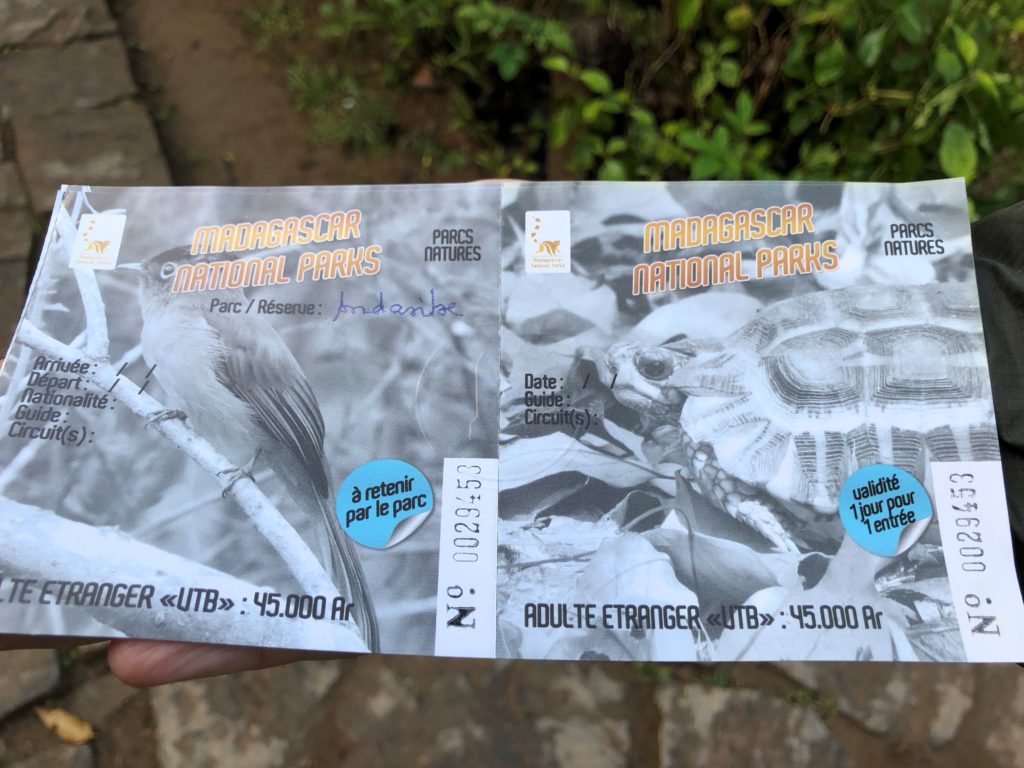 We walked in the rainforest for hours, up and down, on slippery, wet ground – mainly on the paths but occasionally among the trees – but at least it was daylight. We were searching for the indri in rich vegetation: lots of plants growing on other plants, but not many flowers this time of the year (Madagascar’s winter).
We walked in the rainforest for hours, up and down, on slippery, wet ground – mainly on the paths but occasionally among the trees – but at least it was daylight. We were searching for the indri in rich vegetation: lots of plants growing on other plants, but not many flowers this time of the year (Madagascar’s winter).
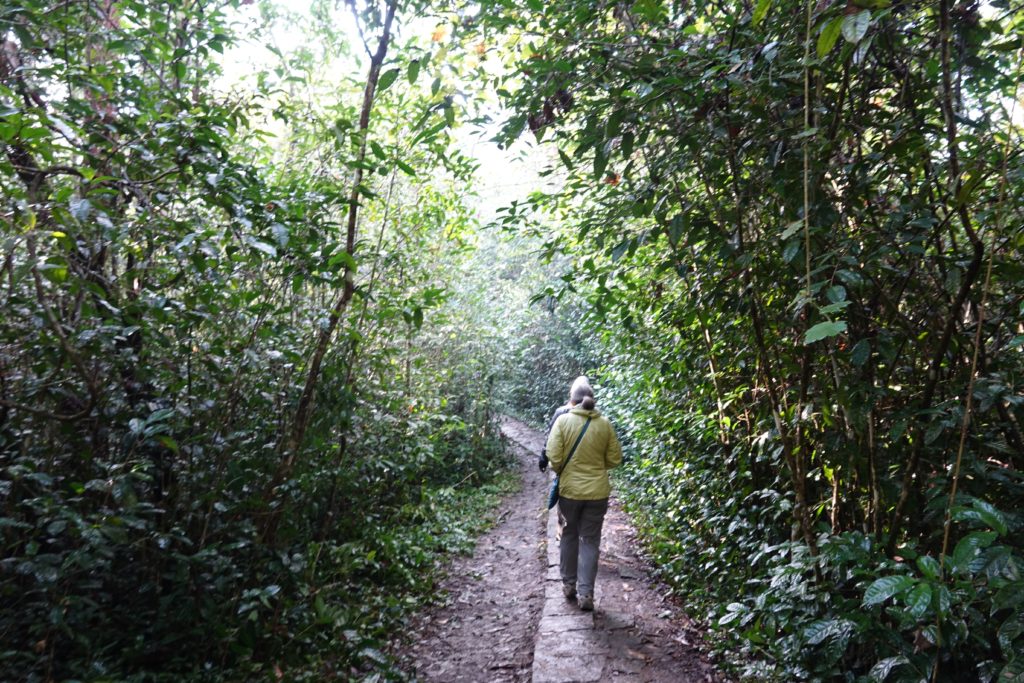
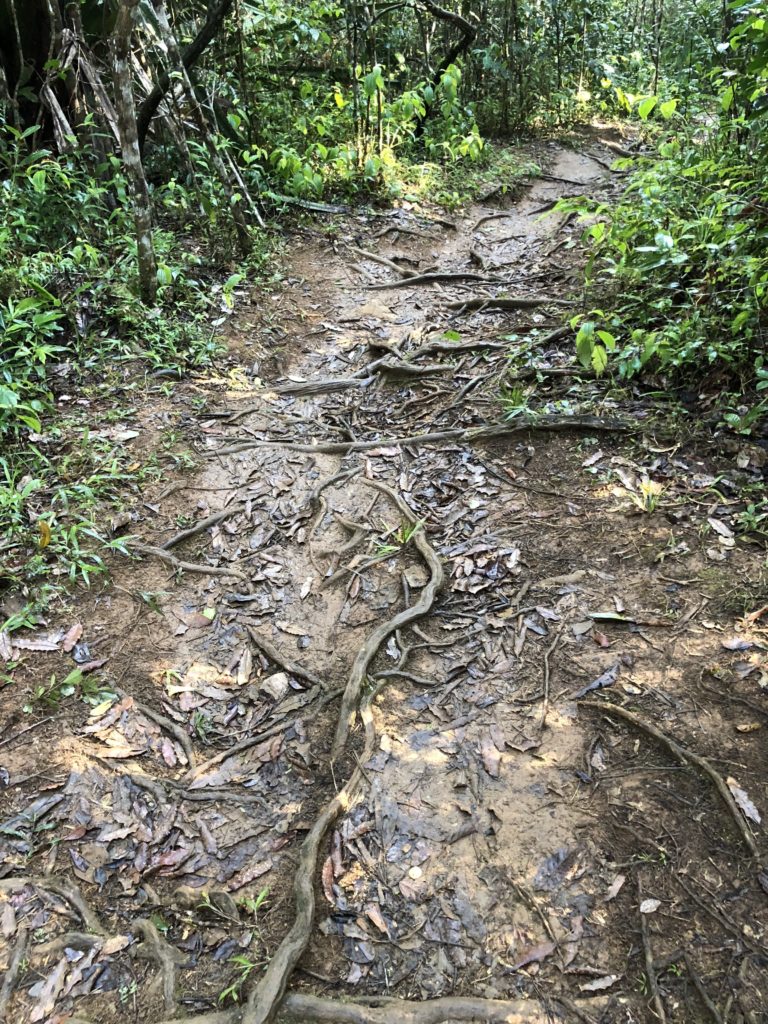
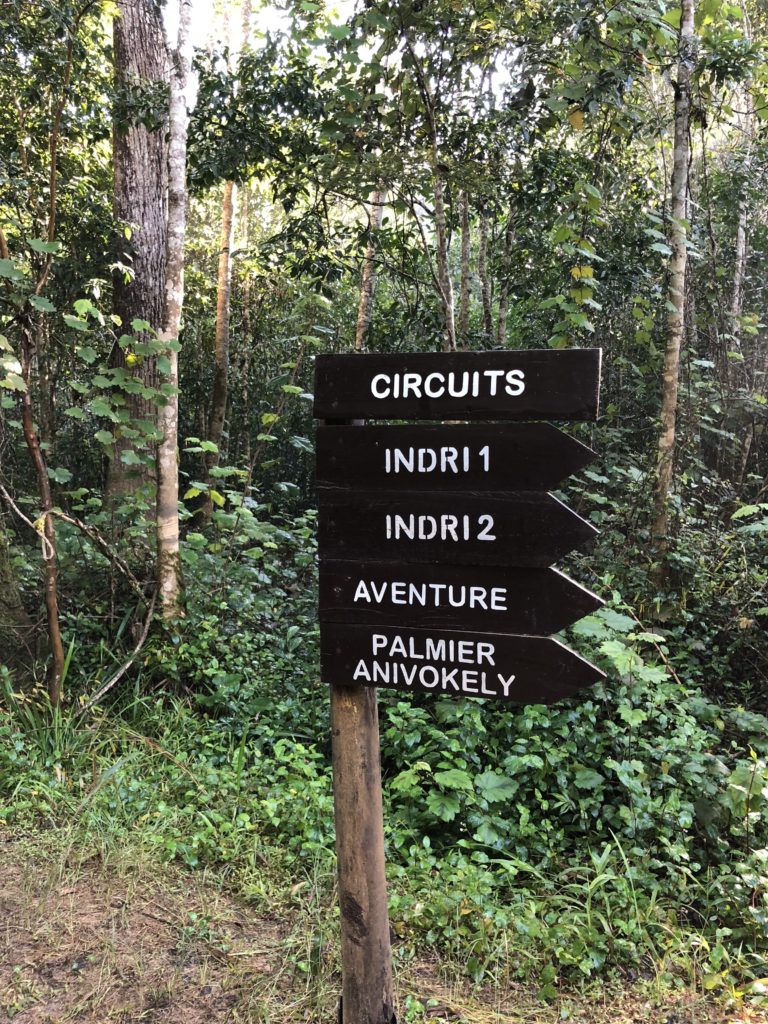
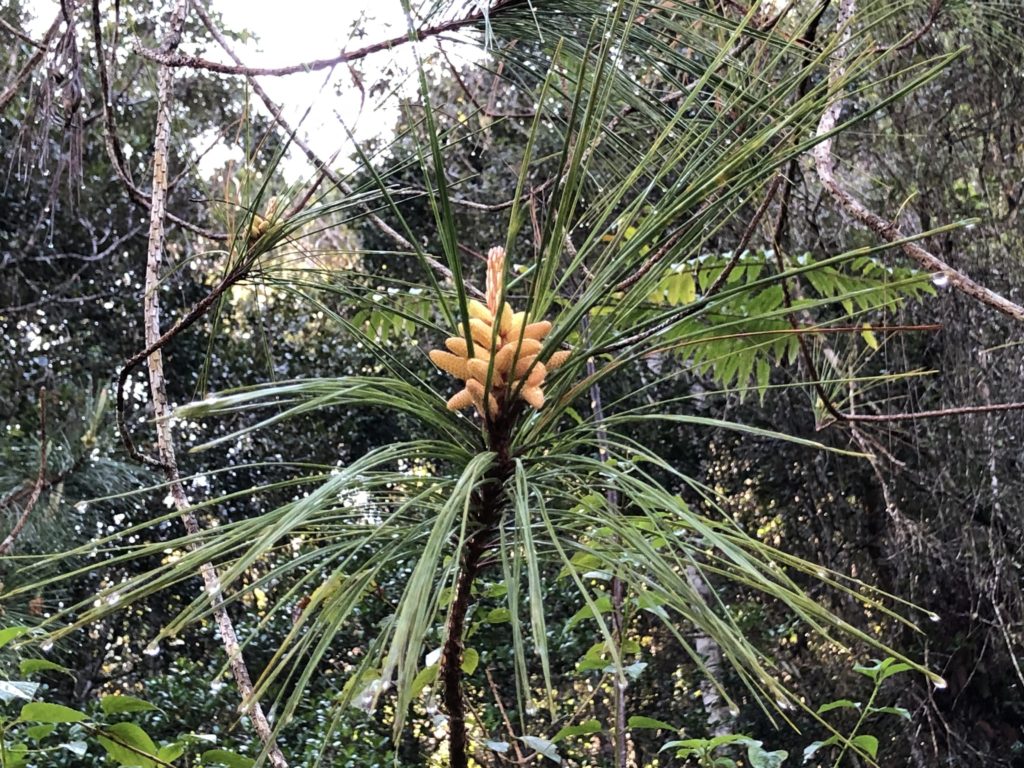
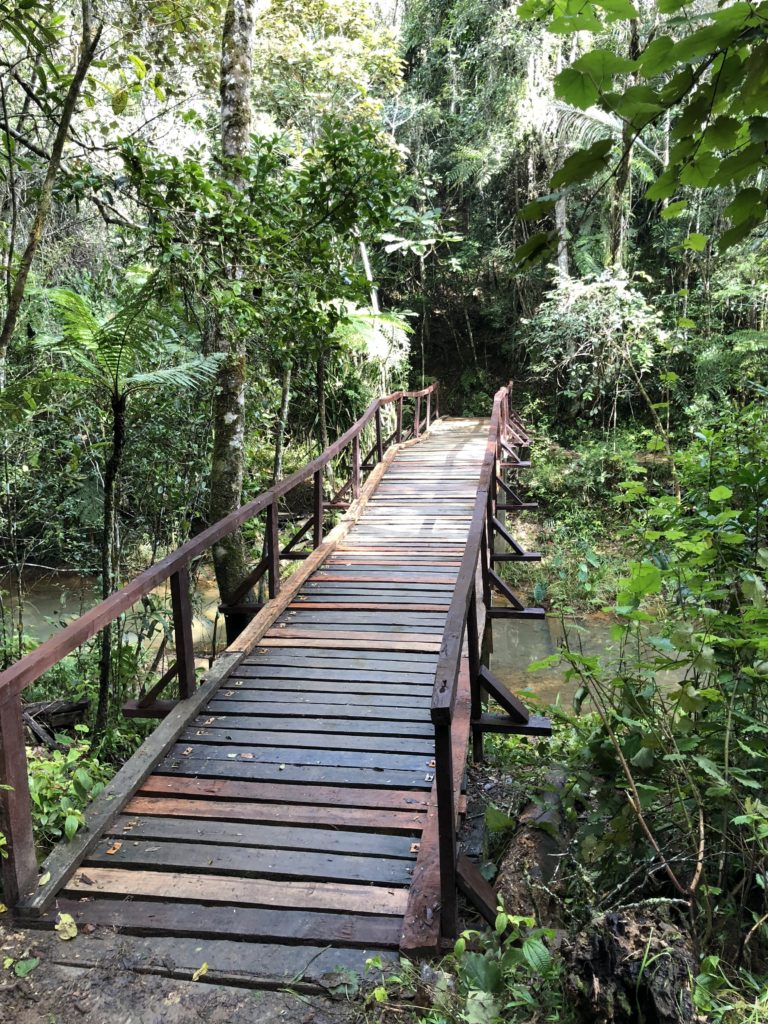
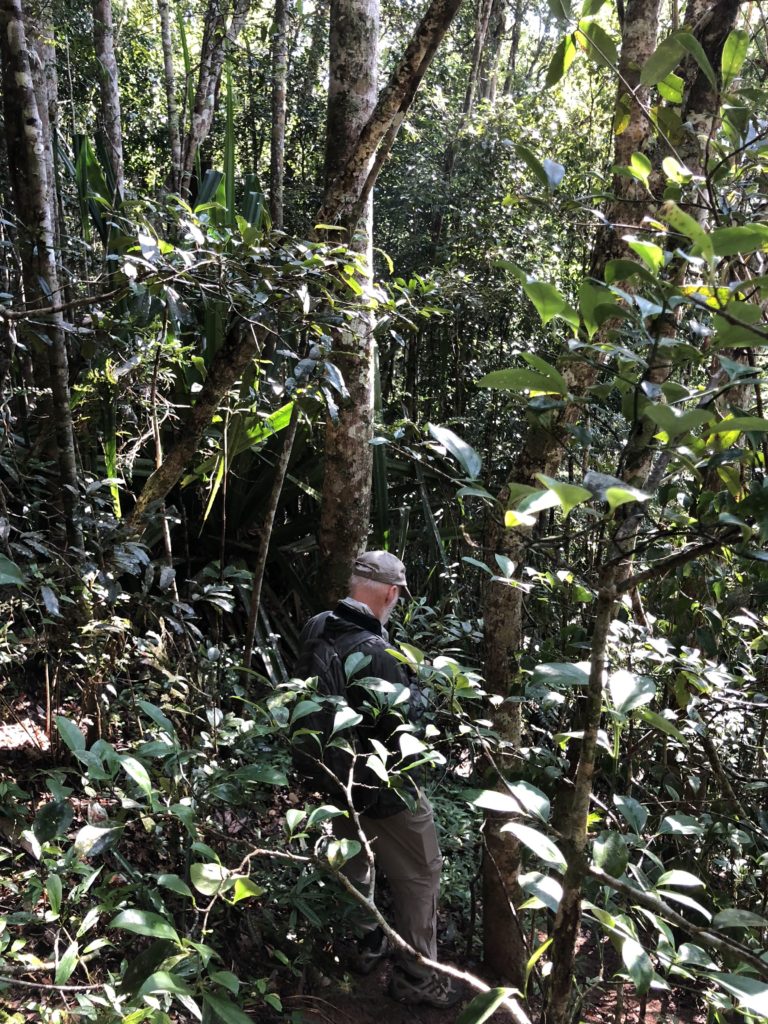
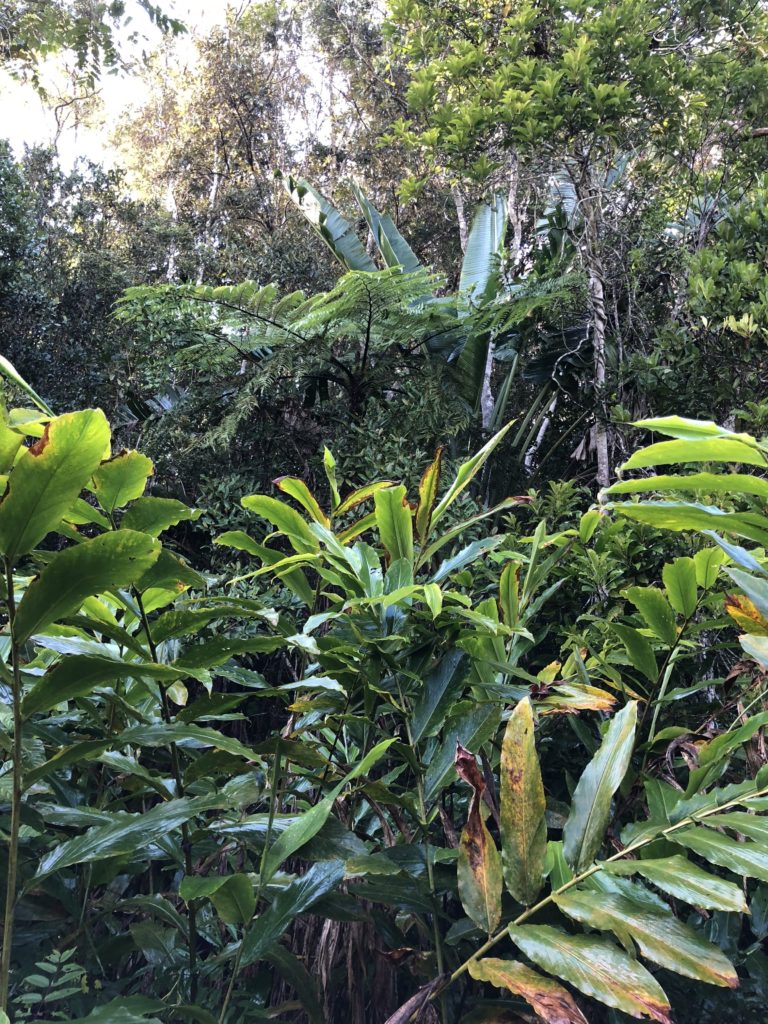

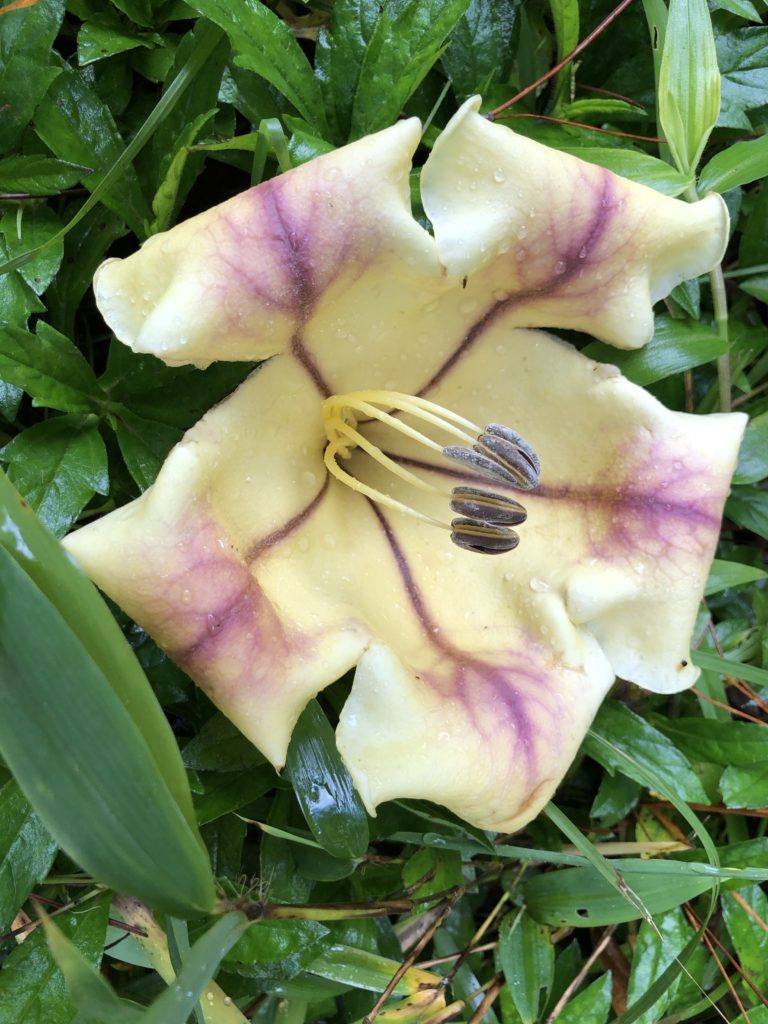 And suddenly we heard them! A few indri up in the trees.
And suddenly we heard them! A few indri up in the trees.
For the people of Madagascar, the indri is a sacred animal; playing an important role in the myths and legends. In Malagasy, it’s called babakoto, meaning “father of a little boy” (baba = father, koto = little boy). Some think that the indri’s call resembles a father’s call for a lost son.
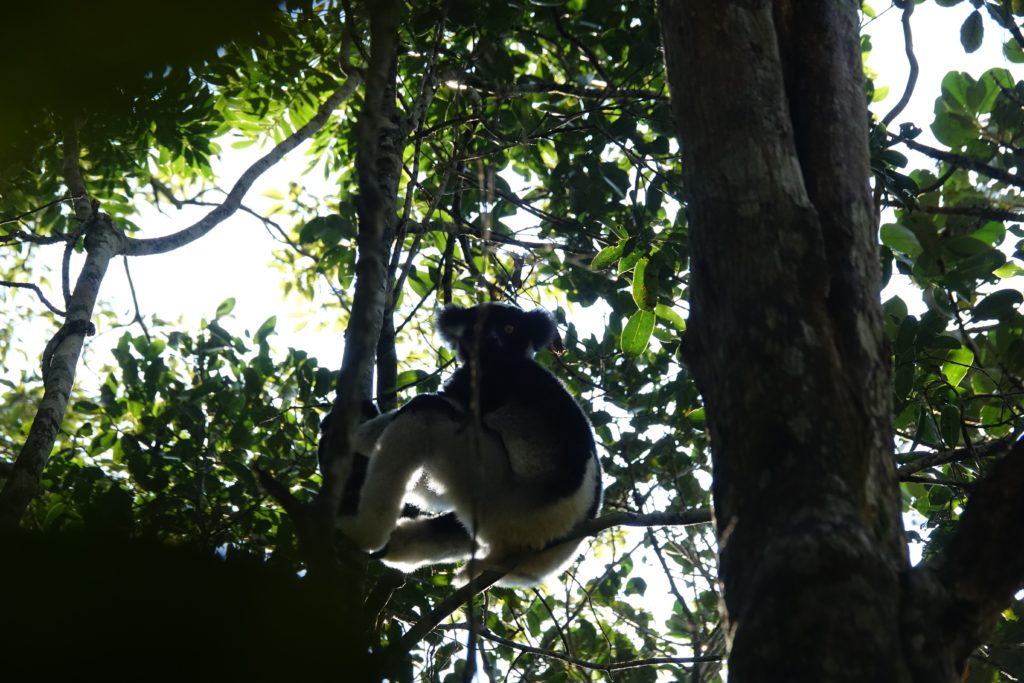
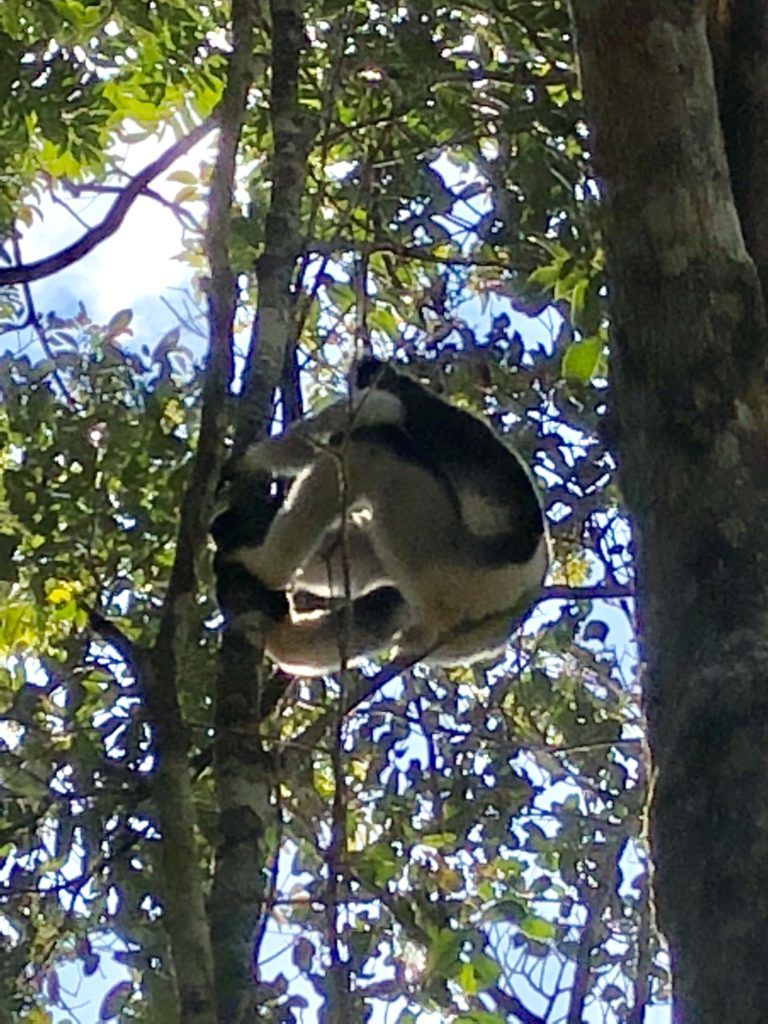 The indri is critically endangered. According to statistics, there are around 10,000 indri left in the north-south strip of the eastern rainforests of the island. They live high up in the trees, 10-30 meters above ground. You might think they are quite safe up there having only a few natural predators like the cat-like fossa and some large birds. But the main problem is that the jungle is cleared out every day and as a result the indri is losing its natural habitat.
The indri is critically endangered. According to statistics, there are around 10,000 indri left in the north-south strip of the eastern rainforests of the island. They live high up in the trees, 10-30 meters above ground. You might think they are quite safe up there having only a few natural predators like the cat-like fossa and some large birds. But the main problem is that the jungle is cleared out every day and as a result the indri is losing its natural habitat.
The indi is a unique, large animal. 60-70 cm long, weights 6-9.5 kg, has a black and white coat and pale black face, and has no tail (more precisely, its tail is rudimentary, meaning imperfectly developed to only 5 cm in length; other lemurs’ tails can be as long as their body). It climbs in an upright position, eats leaves, seeds, and fruit, and lives in small family groups of 2-6 individuals. The groups communicate with a peculiar loud song – some think a roar – that can be heard over long distances (even to 2 km). They sing in a synchronized way which makes them louder. High notes alternate with lower. They communicate warning signals and environmental conditions and announce their territory to the neighbors. They sing seven times a day from 45 seconds to 3 minutes, more actively in the morning. Their amazing singing brought smiles to our face.
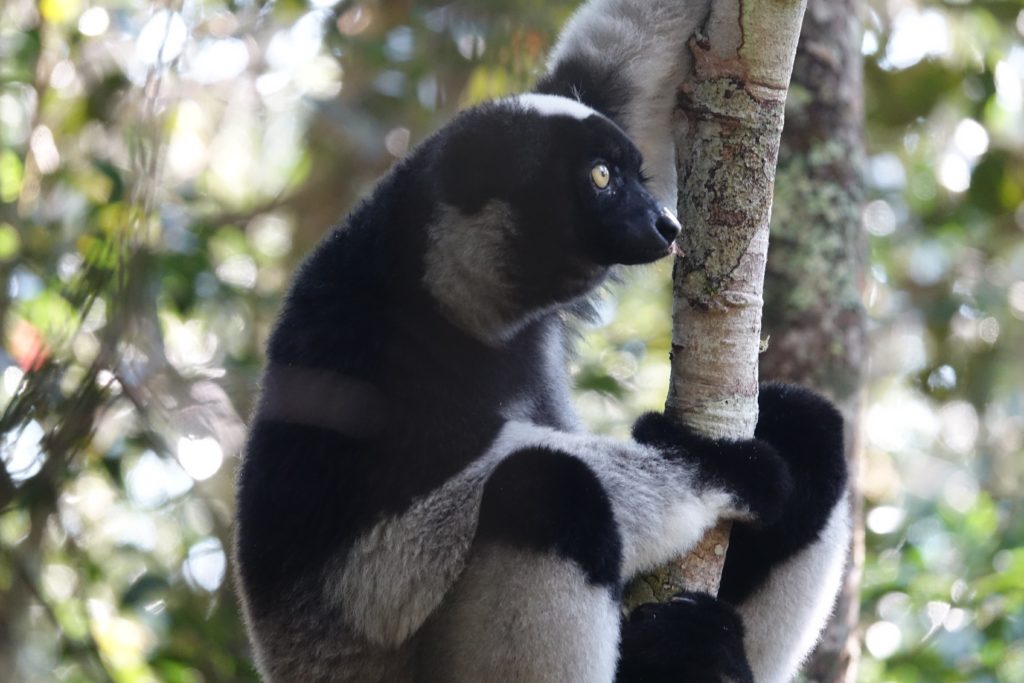
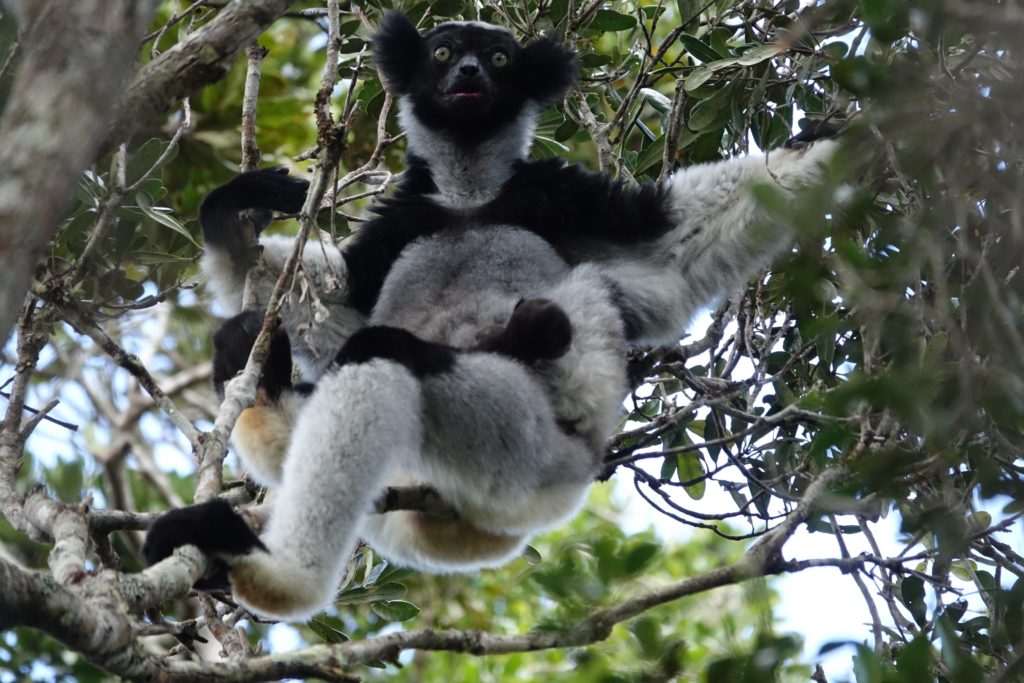 And later, after more walking, we were lucky to get very close to the beautiful diademed sifakas as they were doing their acrobatic movements on the trees in front of us. A spectacular view indeed.
And later, after more walking, we were lucky to get very close to the beautiful diademed sifakas as they were doing their acrobatic movements on the trees in front of us. A spectacular view indeed.
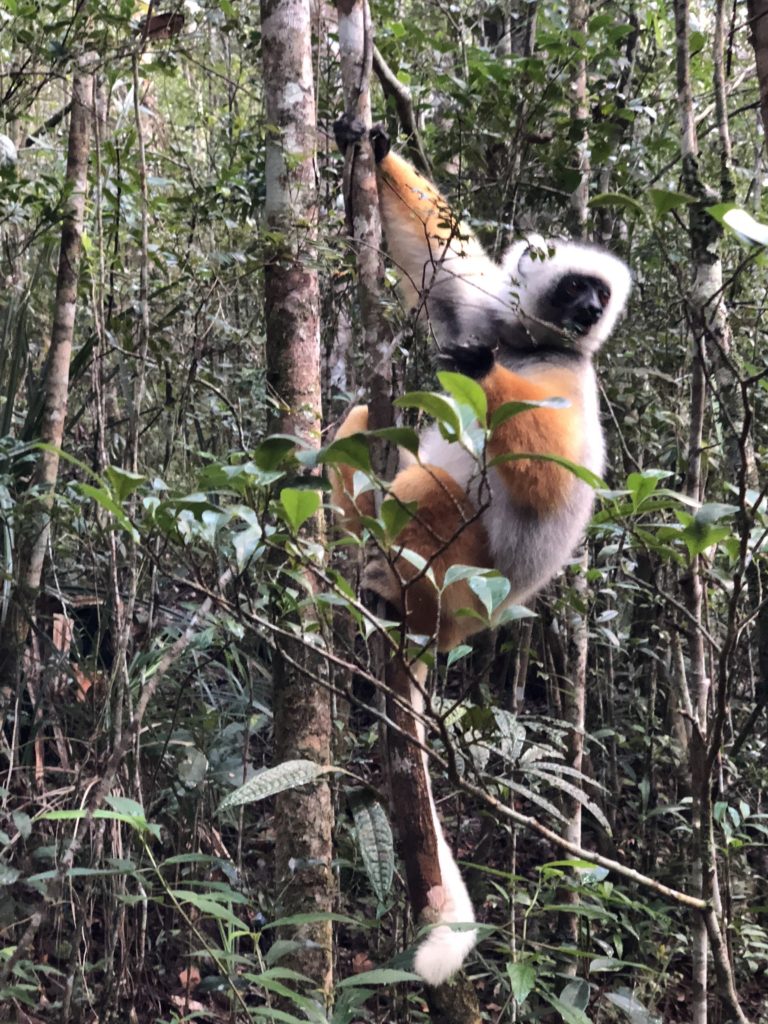
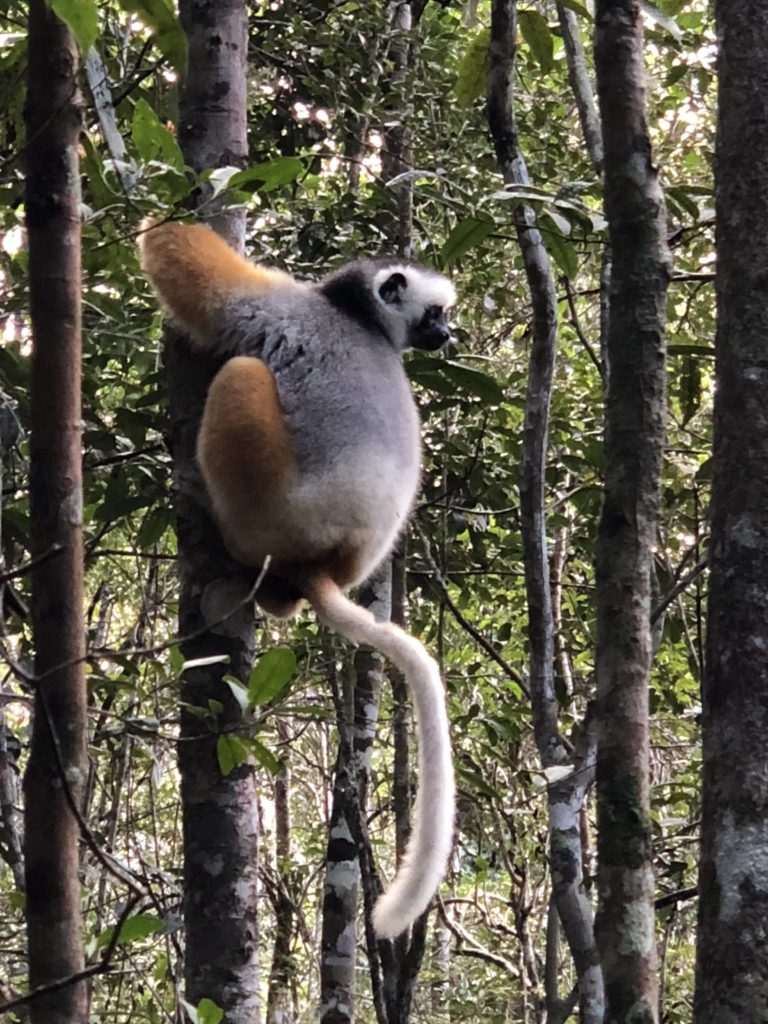 These lemurs, also critically endangered, are one of the most colorful lemurs with long, silky fur. White fur around their black and gray face, rich yellowish-golden in the arms and legs with some reddish-brown mixed in. They also live in the trees in groups of 2-10 and rarely come down to the forest ground for some food, which consists of diverse plants. Even though they are quite large (they weigh 4-8 kg, measure around 50 cm in length, plus 50 cm more for their tail), they are athletic enough to jump easily between the trees.
These lemurs, also critically endangered, are one of the most colorful lemurs with long, silky fur. White fur around their black and gray face, rich yellowish-golden in the arms and legs with some reddish-brown mixed in. They also live in the trees in groups of 2-10 and rarely come down to the forest ground for some food, which consists of diverse plants. Even though they are quite large (they weigh 4-8 kg, measure around 50 cm in length, plus 50 cm more for their tail), they are athletic enough to jump easily between the trees.
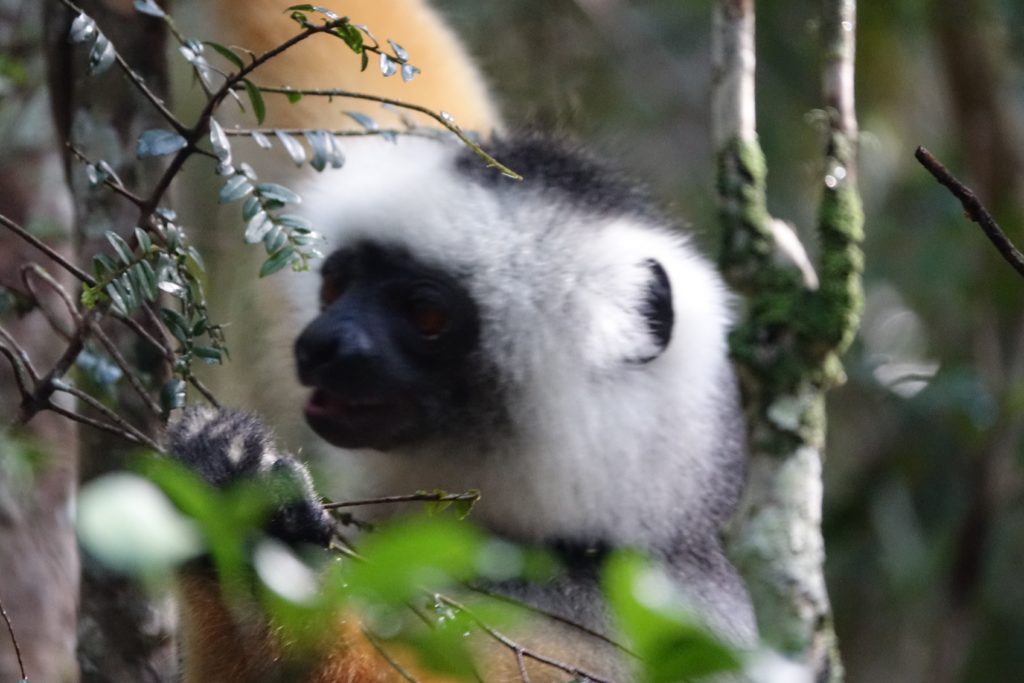
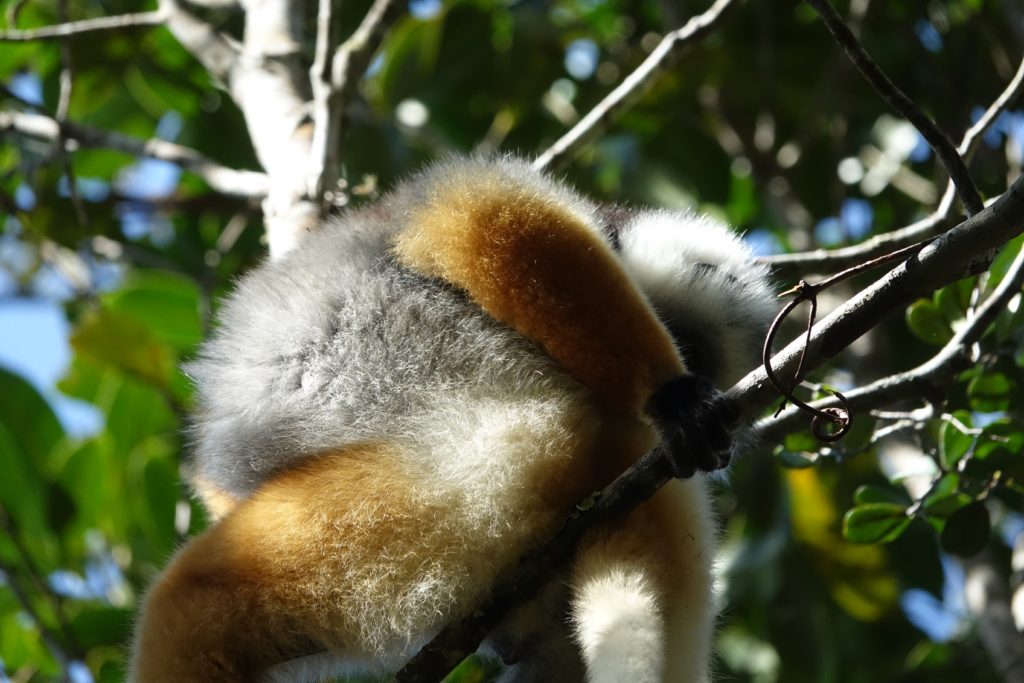
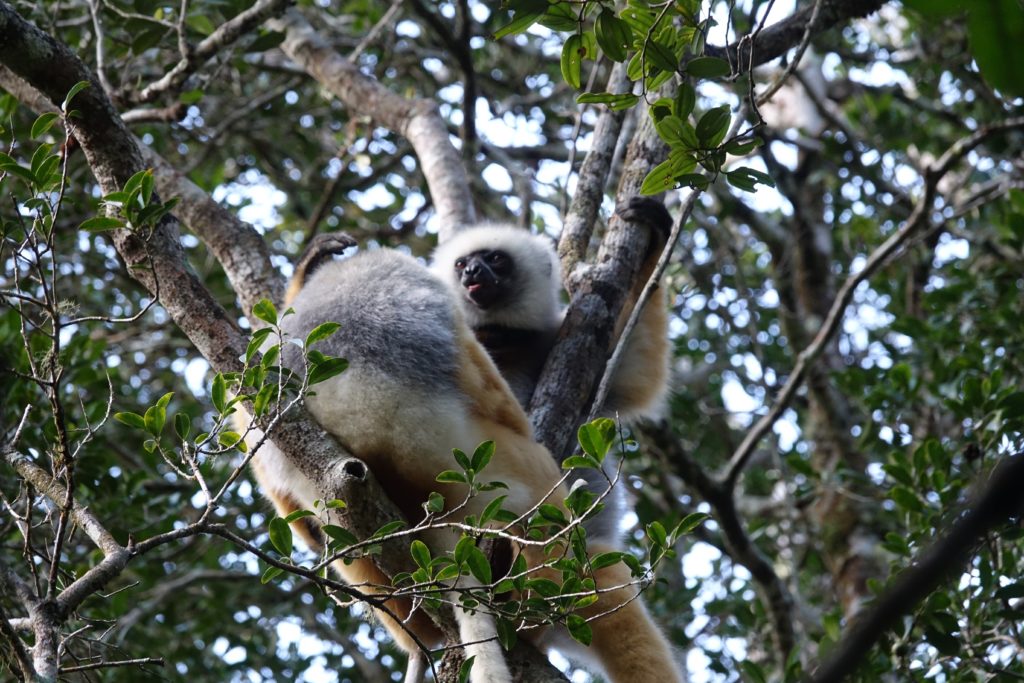 We walked some more enjoying the lush vegetation of the rainforest knowing that our time on Madagascar was getting close to the end. What remained was to drive back to Antananarivo and then fly back to the U.S. We were full of extraordinary experiences!
We walked some more enjoying the lush vegetation of the rainforest knowing that our time on Madagascar was getting close to the end. What remained was to drive back to Antananarivo and then fly back to the U.S. We were full of extraordinary experiences!
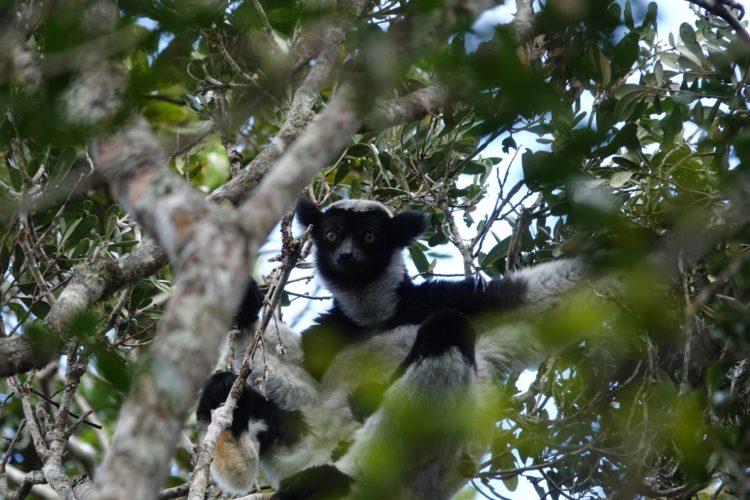
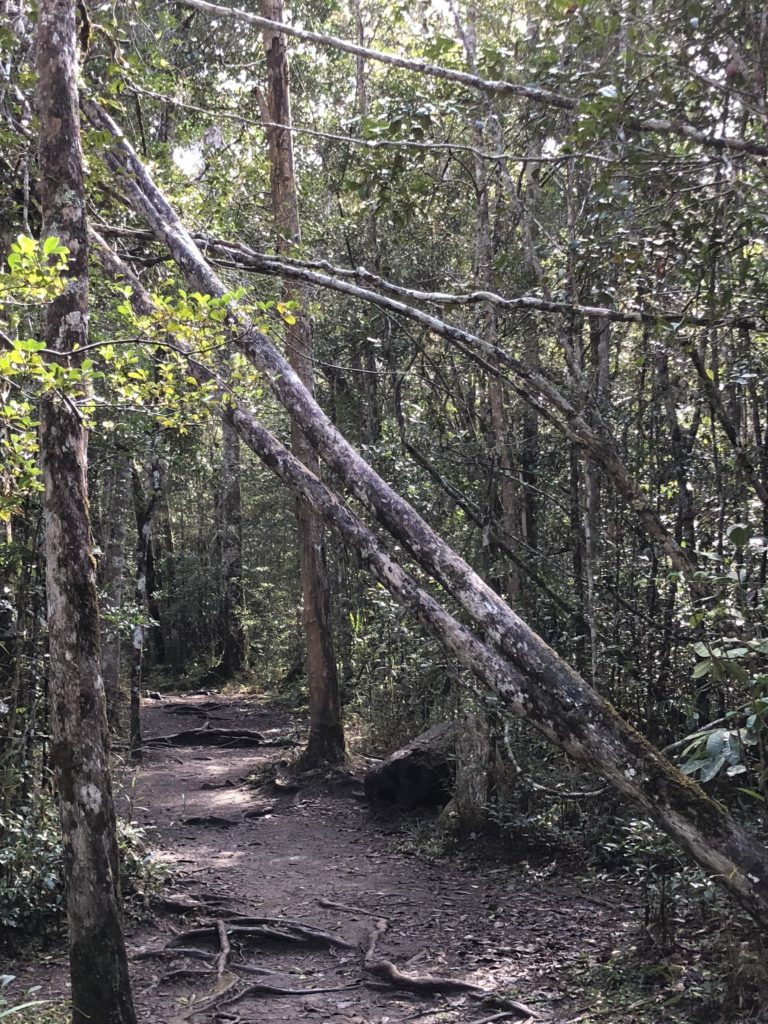
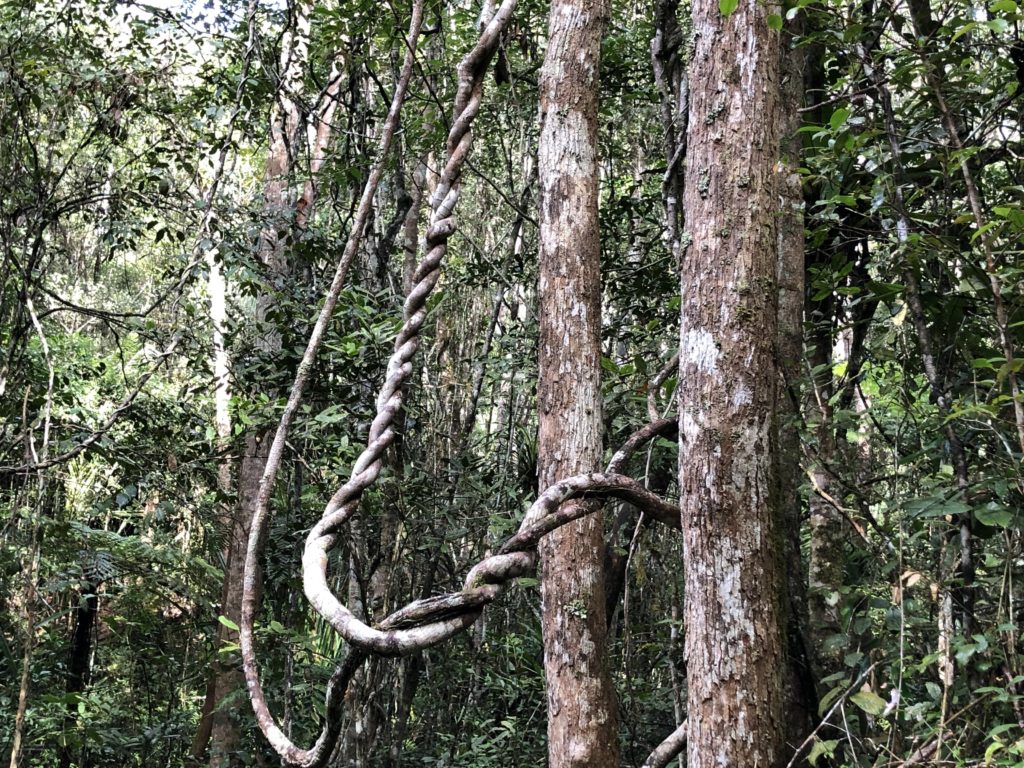
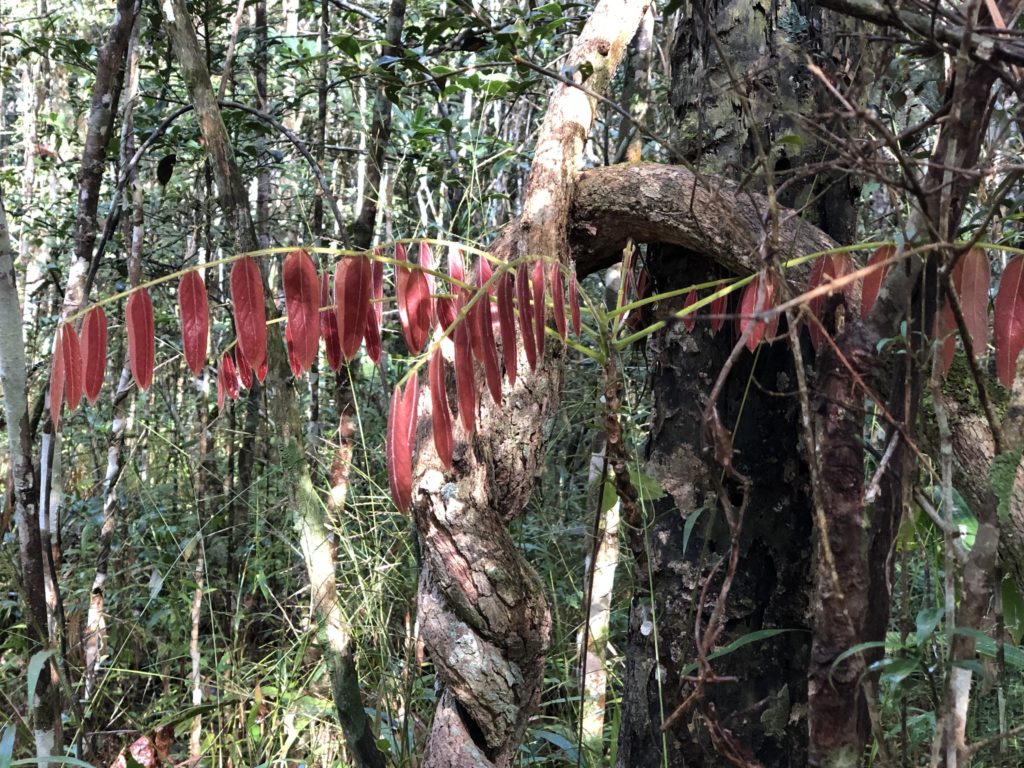
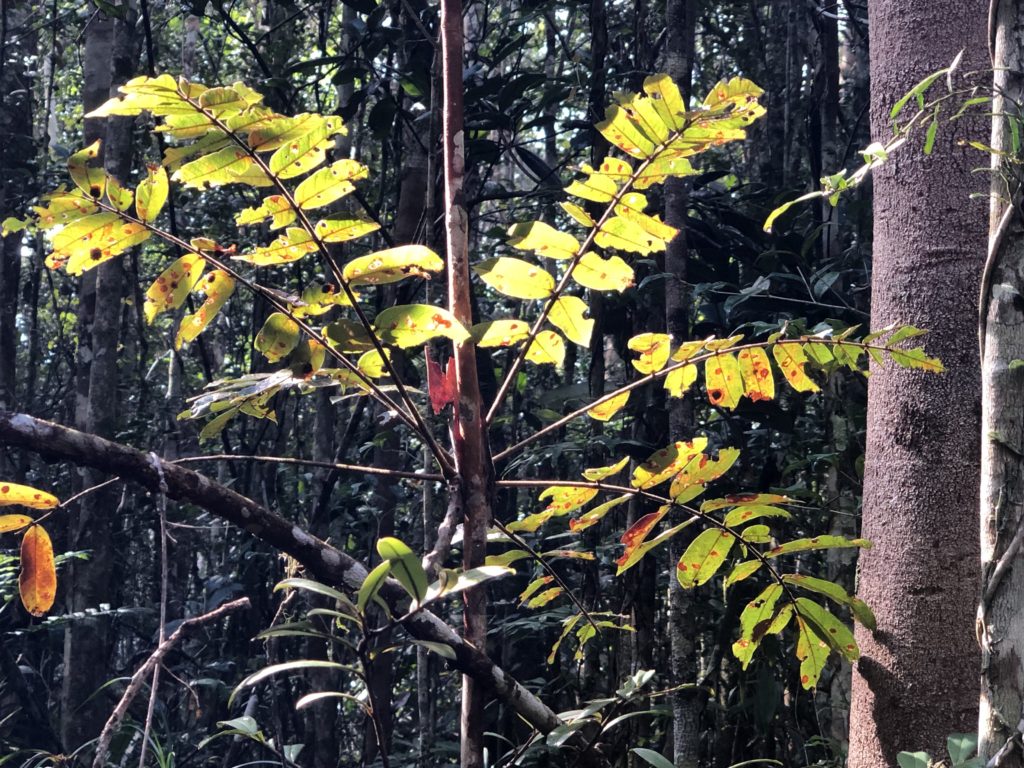

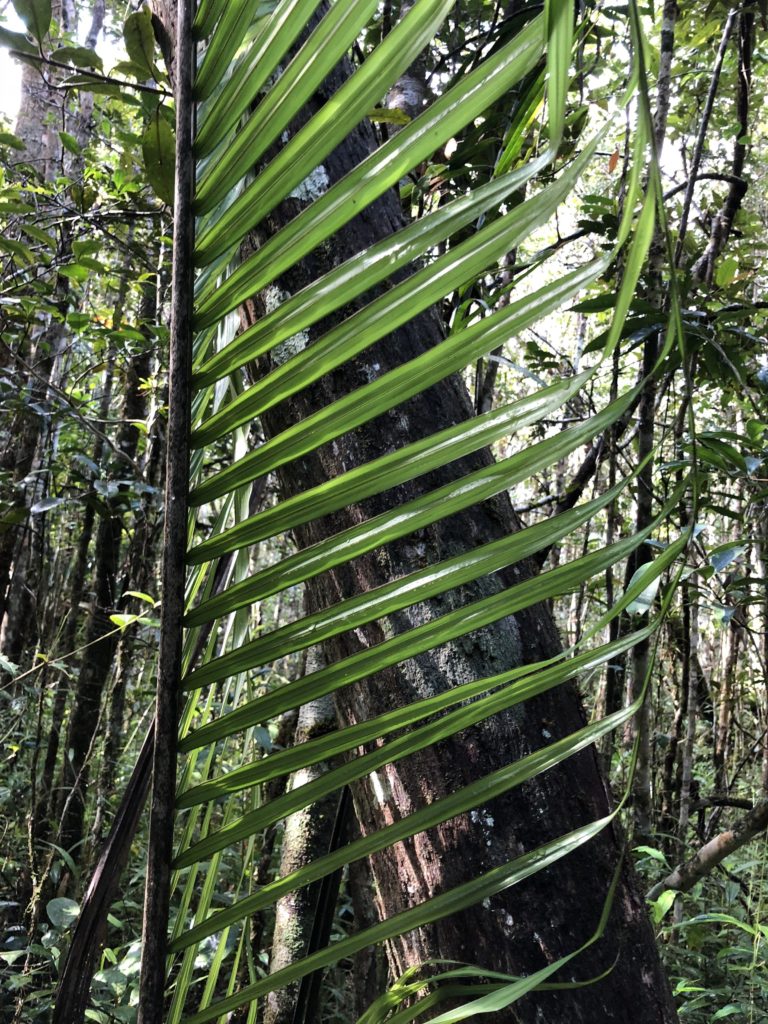
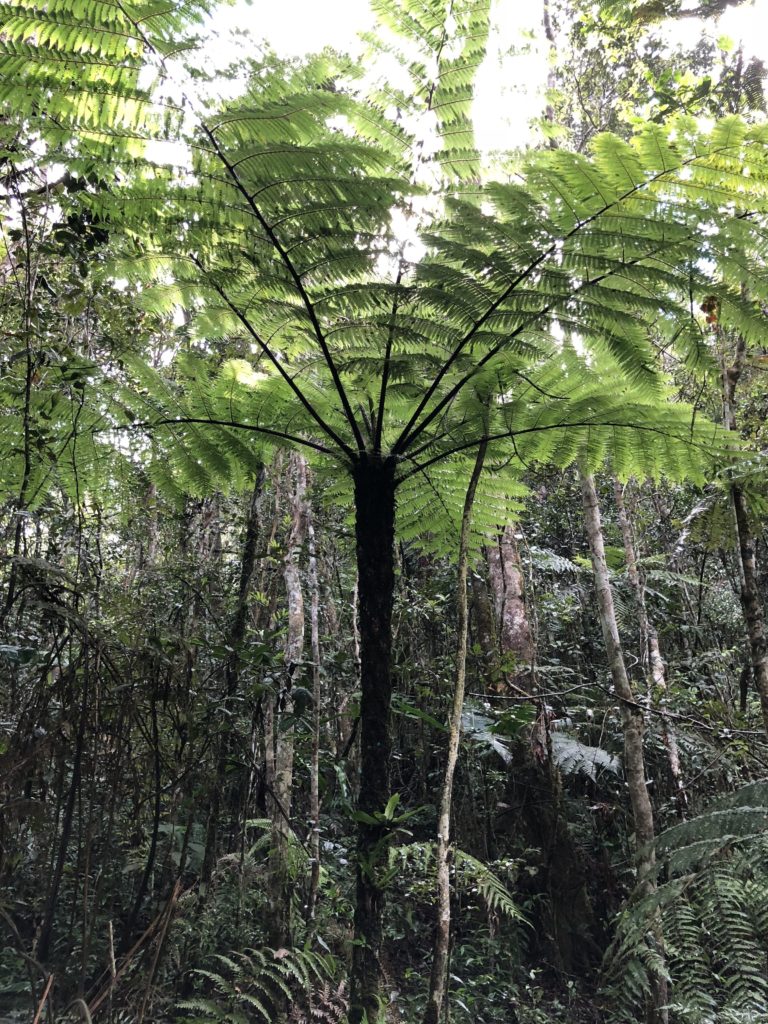

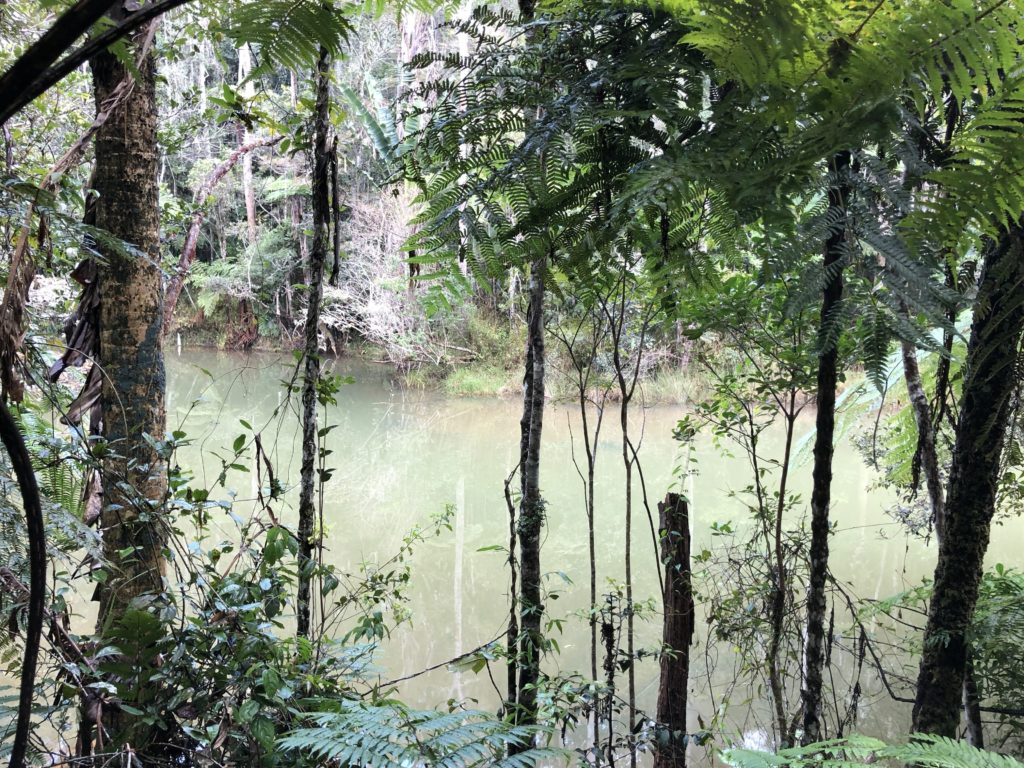





I had to Google on what the indri sounded like. Every interesting and unique sound for sure.
The indri was amazing. I couldn’t stop smiling the whole time we were listening to that special sound.